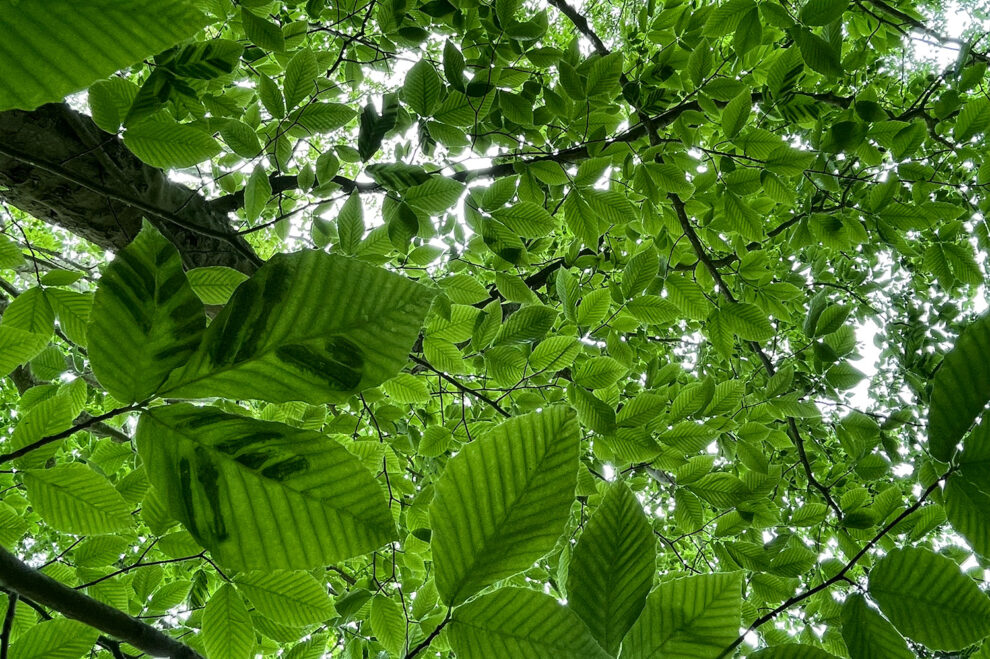Climate change risks beech tree growth decline across Europe, potentially leading to forest dieback.
A new study finds that beech trees in Europe will be massively affected by climate change. Experts argue that damage is already quite severe and recommend introducing drought-tolerant species.
These are the results of the “Back to the future – A new look at the prospects for beech after 20 years of research and advancing climate change” conducted by the Swiss Federal Institute for Forest, Snow and Landscape Research (WSL).
Researchers revisited conflicting studies from 2004 and 2005 and, using improved data and recent evidence, concluded that beech trees are highly vulnerable to extreme droughts, which could lead to large-scale dieback and local extinction.
Lead researcher Arthur Gessler highlighted that extreme dry years, such as those in 2018-2023, have already caused severe damage, and even under optimistic climate scenarios, beech forests will suffer.
The forest industry must prepare for fundamental changes. Gessler recommends introducing drought- and heat-tolerant species, like oak, to mitigate impacts and promote greater biodiversity in forests to improve resilience.
According to Gessler, even if the beech were to suffer massive drought damage, high genetic diversity and diverse forest structures could help reduce risks and prevent total forest failure.
Tree growth decline
The recent WSL research reinforces the findings of a previous pan-European study that climate change could significantly reduce beech tree growth across much of Europe this century, potentially leading to forest dieback.
Analysing 780,000 tree rings from 1955-2016, researchers found growth declines of up to 20 per cent in southern Europe, while northern areas like Scandinavia experienced growth increases.
Predictions suggest growth could either decline by 30 per cent in southern Europe by 2050 (in an optimistic scenario) or growth could drop 20-50 per cent in central and southern Europe, with only limited gains in northern areas (in a pessimistic scenario).
Researchers suggest immediate adaptation measures and sustainable forest management to mitigate the impacts. High-altitude and northern regions may see beech dominance increase as other species struggle.
A separate study analysing the contrasting patterns of water use efficiency and annual radial growth among European beech forests along the Italian peninsula found that these forests adapt differently to climate change.
Southern European beech trees are more resilient to climate change, likely due to their genetic adaptation to harsher conditions. Researchers argue that leveraging these adaptive traits could help improve forest management and enhance resilience to future extreme events.
Why beech trees matter to Europe
Beech is considered one of the most ecologically and economically valuable tree species in Europe. Beech forests are vital for biodiversity, carbon cycles, and timber and are socially valued as spaces for recreation.
Though not demanding of soil type, it requires a humid atmosphere with precipitation well distributed throughout the year and well-drained soil. It can withstand a rigorous winter cold but is sensitive to spring frost.
Despite their dominance by a single tree species, beech forests are rich ecosystems supporting up to 10,000 species of flora, fauna, and fungi, particularly in old-growth forests.
These ancient forests provide critical habitats for cavity breeders, bats, and other creatures. They also play a crucial role in water management, funnelling rainwater down their trunks to nourish soil organisms and contribute to groundwater recharge.
Beech forests host almost all European tree species and feature diverse microhabitats, such as springs, streams, rocks, and hollows, which further enhance their structural and ecological diversity.
Due to their importance in ecological processes, the primaeval beech forests of the Carpathian Mountains were inscribed on the UNESCO World Heritage List in 2007 as the largest and most intact temperate forests in Europe.










